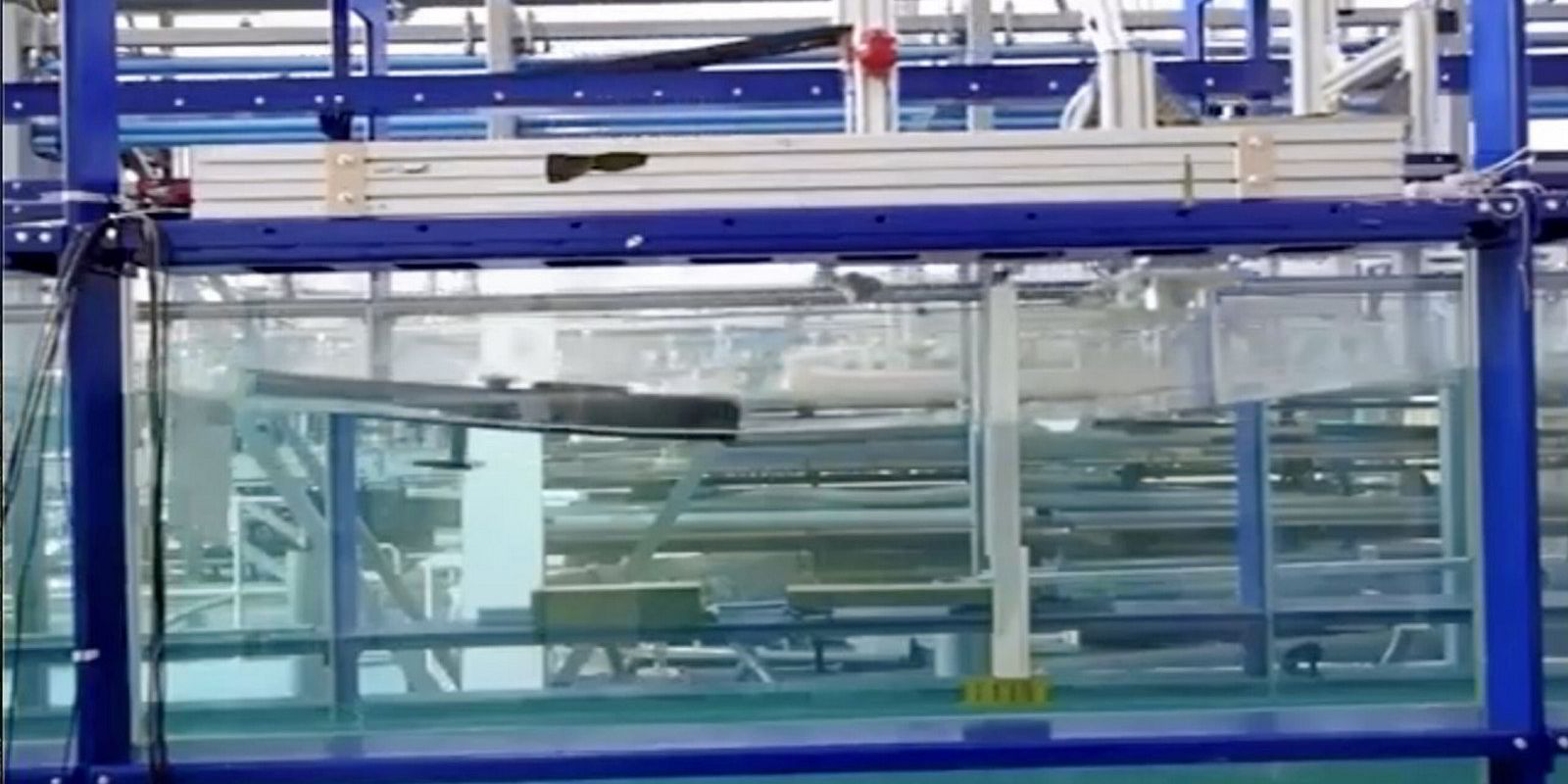Scientists in the UK are developing a device to maximise wave power for vessels.
Dr Liang Yang, a lecturer in marine renewable energy systems at Cranfield University in the UK, explained that it has been known for years that ocean waves can partly or wholly propel ships with a specially adapted hydrofoil.
This is similar to how fish or whales make use of their fins.
“Wave energy can be converted directly into thrust forces,” the scientist told TradeWinds.
Research at Cranfield has looked at how a bio-inspired foil can best be designed and implemented to maximise levels of propulsion and save on fuel use.
Work on lab-scale test models of “wave-devouring propulsion”, or WDP, at Cranfield has demonstrated the potential to reduce fuel use by 20%, Yang added.
This would, in turn, mean up to a 15% reduction in carbon emissions from fossil fuels per ship.
WDP technology has also been tested with small vessels. One is the Suntory Mermaid II, a wave-powered boat that completed a 110-day voyage from Honolulu, Hawaii, to the Kii Channel.
Current plans suggest that the technology should be available for use by the industry within five years, the lecturer said.
The research project includes supporting studies into how wave energy can be optimised for cargo vessels.
This means design features that allow the substructure to adapt to changing weather and wave conditions, how different sizes of ships behave in these other conditions, and how more active propulsion can be generated through the movement of the fin-like hydrofoil, Yang explained.
It is a simple idea but poorly understood

Attention is also being paid to how cargo vessels can follow the best wave routes around and between coastal areas, allowing WDP to have the greatest impact, he said.
“WDP is a simple enough idea, but one that hasn’t been introduced previously because the science of the mechanism … was not well understood, and the imperative of fuel savings was not so intense,” Yang added.
He believes its use is a low-cost means of reducing bunker consumption because it involves the addition of a substructure onto existing vessels with no need for expensive engine machinery or related fuel systems adaptations.
Using the ship’s motion, the foil can be fitted at the bow for passive propulsion.
Alternatively, it can be used as an active “flapping” foil propulsion system to increase efficiency.
The researcher argues that smaller unmanned surface vessels, used for oceanography, waste collection and environmental monitoring, and transporting limited cargo, would be wholly self-powering and could remain at sea indefinitely.




